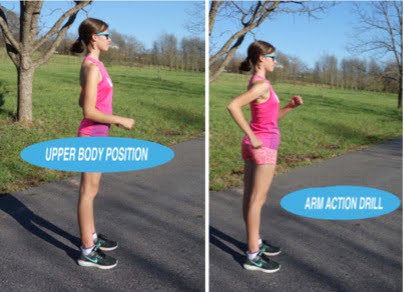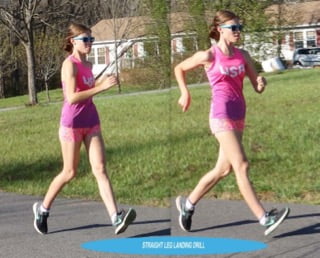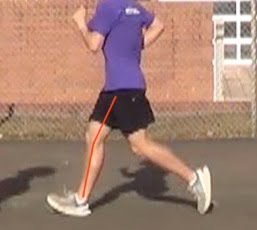This video links and information are free to share with athletes, parents, coaches and volunteers.
History
Racewalking is a rapidly growing sport, both on track and on road courses. With roots in renaissance ‘footmen’ in Europe, it is over 300 years old. In the 1800’s, racewalking was the starting point for modern track and field, which later adopted additional events from the Ancient Greek Olympic games.
Opportunities
Today, racewalking is an event with competitive opportunities for all age groups within USATF, or in high schools with USATF qualified officials. Mile, 1500m and 3000m races are part of USATF Junior Olympic competitions, USATF National Youth Championships and High school events. At USATF National Junior championships (under 20 years of age) and in trials for US Junior National Teams to compete at the World Cup and other major events, the competition distance is 10,000m. Seniors and masters have race opportunities from 1500m up to 24 hour races. The current senior international distances are 20,000m and 35,000m with a two person mixed marathon relay under development for future championships, including the Olympics which has included the racewalk for more than a century.
What is racewalking? It is an endurance event using a cyclic motor skill: a simple pattern of movement repeated about 3 times per second and governed by two rules. This is similar to swimming and cross-country skiing events. These are also cyclical skills controlled by rules of movement.
Rules
** For more information on the rules, please see the section on officiating the racewalk event group. If you want to learn to racewalk, do NOT start by reading the rules. Instructions for how to learn are listed below. Years of coaching have shown that learning correct technique is easier if you are not focused on a list of rules.
How do running and racewalking differ?
Anyone can learn to racewalk for fitness or competition at any age, and it’s easier on the joints. If you are injured or just starting a fitness routine (as always, check with your doctor first) you may find racewalking a great alternative to running.
Runners have flight times over 300 milliseconds whereas racewalkers cannot exceed 40 milliseconds. As a result, impact forces at heel strike are less than half as great in racewalking as they are in running. Racewalking requires a higher cadence (steps per minute) but is about 75% as fast as running at maximum speeds. Racewalking and running produce exactly the same maximum oxygen uptake, energy expenditure, and heart rate.
Running uses the quadriceps and hip flexors as the primary drivers while racewalking uses the hamstrings and glutes. For this reason, racewalking is a useful skill for ultra runners so they can ‘rest’ key muscle groups in very long races without stopping. Racewalking requires greater core strength development for top level competition, to avoid wasting energy at each heel strike.
What makes a good racewalker?
If you are a club coach with an incoming group of new athletes, select potential racewalkers based on speed endurance and the ability to learn new motor skills. It is also useful if they have some endurance training background and an analytical mindset. Racewalkers often have a more muscular physique than endurance runners; however, athletes from all sorts of backgrounds with very varied physiques have excelled as racewalkers over the years.
How do you learn to racewalk?
Do not distract the athlete by telling them rules in the first few weeks of learning the technique.
Examples:
First show the athletes what they are trying to achieve. Especially useful are videos of young but skilled racewalkers. The slower speed makes it easier to see their action and young athletes reacted positively to viewing athletes of a similar age. Watching movements activates similar parts of the brain to those that are involved in those performing movements.
Good videos for beginners:
Example first lesson:

An example lesson in Spanish:
https://youtu.be/gAQE8s6AUtg
An example lesson in Russian:
https://youtu.be/HN-pGFIkP84
An example lesson in Hindi:
https://youtu.be/TeSKdLNwbws
Posture:
After showing some example videos, we teach posture. The overall position is upright or leaning slightly from the ankles so as to place the body weight over the balls of the feet. Eyes look to the horizon. The shoulders remain low and relaxed throughout the arm swing with the elbows at about a right angle.

Arm and hip coordination:
Next we teach how to position the hips for each heel strike. As the arm swings back, the hip rotates forwards. The right arm and hip action mirrors the left arm and hip action.
Teach the leg action:
Once the arm to hip coordination is mastered, the leg action is added. The key points for a beginner are landing on the heel with a straight leg close to the body, and bending the knee after the leg passes the vertical.
Teach the start:
Beginners are likely to be racing short track events and will also need to start intervals in training. Rules for starting racewalks are the same as for running events. A lesson on racewalk starting:
Gradually build distance and speed:
At first, focus can only be maintained for short periods before technique deteriorates. Start out with racewalking fast—but not all out—for 80 to 100 meters with easy racewalk recovery around the bends. As the skill develops, use 1-2-3-2-1 ladders with 100 meter recovery between the faster sections. After 2 to 3 weeks, the skill should be sufficiently ingrained that longer reps can be attempted, such as 300 meters fast with 100 meters easy recovery.
Continue to refine technique:
A significant error common in beginners is landing on a bent leg or allowing the leg to bend before it has reached the vertical. This action can lead to disqualification. Learning the action of chipping a ball can help.
A five minute video on correcting knee errors:
https://youtu.be/rgcoCEZnYLU

A three minute video on correcting elbow errors:
https://youtu.be/i_But7TKBjA
A video on how to correct other errors:
https://youtu.be/wix6Ib4kg8E
Running coaches—How to apply what you already know:
You can coach racewalkers using any running training method if you adjust distances and speeds to match effort and time in each mode.
Applying running coaching to racewalkers:
https://youtu.be/Kxf3b_vXKsg
A thirty minute video on how to coach racewalkers:
https://youtu.be/M_mr1_LHo-o
Working with younger athletes:
USATF developed a simple racewalk based game for the Run-Jump-Throw program directed to beginning athletes, especially those under age 10.
Young athlete’s racewalk station from RJT:
https://youtu.be/YMQSIAvEZkM
For additional video resources, please visit:
www.tinyurl.com/walk2020